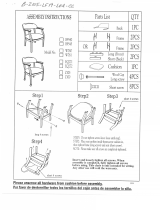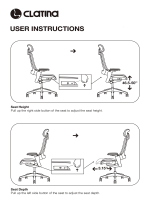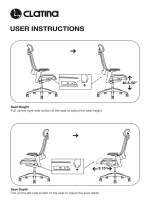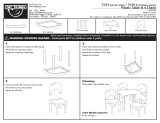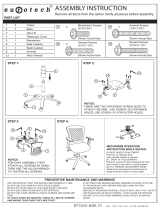
4
5
2 Handling/Transport
2:5 Securing
The wheelchair must be secured as fol-
lows. The straps must not be passed
through the wheels or around the back
tubes.
2:6 Seat belt
If the wheelchair is used as a seat for
travel Etac recommends that the user
wears the 3-point seat belt that is fitted
in the vehicle. It is important that the
3-point belt is fitted correctly, as shown
in the illustrations:
2:7 Recommendations
2:8 Warning
- The wheelchair’s position-
ing belt is not sufficient to
prevent the user from being
thrown out of the wheelchair
in the event of sudden brak-
ing.
- The restraining device must
not be passed through the
wheels or around the back
tubes.
Etac recommends in the following
order:
1) The user transfers to a seat in
the vehicle and uses the vehicle’s
3-point belt while travelling. The
wheelchair is then placed in the
boot or safely in the back seat so
that it cannot overturn or roll.
2) The wheelchair is secured
facing forwards in the vehicle as
per this manual, the user uses
a separate 3-point belt that is
secured in the vehicle. This is the
way in which the wheelchair is
tested and approved according to
the ISO-standard for crash testing
of wheelchairs in vehicles.
3) According to directive 2001/85/
EC,
appendix VII, point 3.8.3. there
are specially marked wheelchair
locations in vehicles that permit
transport with a wheelchair facing
in the opposite direction of travel.
If this means of travel is used, the
user/carer must be aware while
travelling, prepared for sudden
movements and have the capacity
to maintain a safe sitting position
throughout the entire journey.
The user’s disabilities must not be
of such an extent that he/she is
not able to hold onto the handles
fitted in the vehicle when there are
changes of speed or direction.
In conjunction with points 2 and 3:
- a positioning belt should be used
- a correctly adjusted headrest should
be used
- the backrest should be level with or
above the user’s shoulders
- the parking brake should be used
- the anti-tips should be lowered
- Options/accessories that can be
removed without tools, such
as trays, shall be removed and
secured/positioned so that they
do not fly around inside the ve-
hicle in the event of a collision.
- If the wheelchair has been
involved in a collision it should
be inspected at a Technical Aids
Centre or by Etac before being
used again.




















